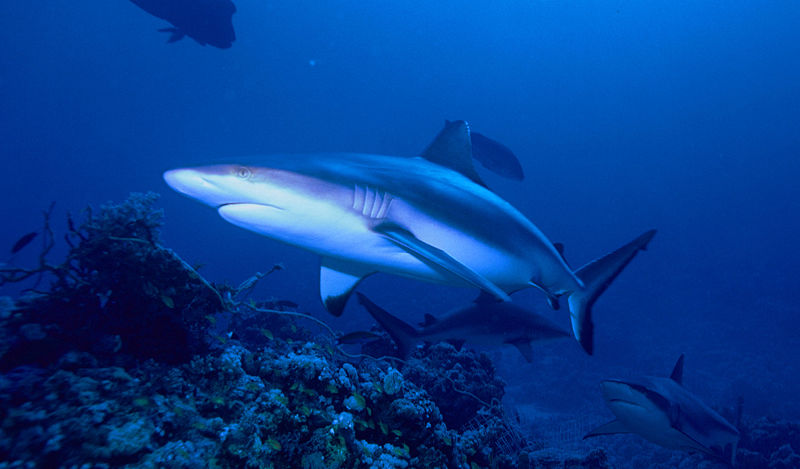Interactions with Other Marine Life
Being reef associated, bandit angelfish are
associated with thousands of organisms
 on a daily basis.
These interactions can impact the bandit angelfish
directly and indirectly, as well as have a non-existent
relationship with them.
Some of the typical interactions are described below.
on a daily basis.
These interactions can impact the bandit angelfish
directly and indirectly, as well as have a non-existent
relationship with them.
Some of the typical interactions are described below..jpg)
As mentioned on the nutrition page, sponges are one of this species most abundant and sought out prey organisms. Aside from this, sponges can have negative effects on the angelfish themselves, as well as on the ecosystem the bandit lives in. When associated with sponges, certain microbes have the ability to change the entire ecosystem. This happens when the microbe affects the DNA of the sponge, changing its phenotype, ultimately making it secrete toxins. These toxins actually kill off spots in the surrounding coral reefs, allowing the sponge to take over the deceased region.
Somewhat similar, a
protist called a dinoflagellate in the genus of
Gambierdiscus can create immune
pathologies linking all the way up the food chain to humans!
This is
 because of herbivorous or omnivorous fish,
like the bandit angelfish, that consume algae that are
infected with a toxin called ciguatoxin.
This toxin is very potent and moves between organisms
with little disruption.
The consumption of the toxic algae can be due to
directly consuming the algae or consuming an organism, such
as a sponge, that has an existent algal partner that is infected.
These herbivorous fish are then consumed by larger
predators, often commercial fish, and ultimately consumed by
humans. The
reason this toxin is able to converge from each organism to
the next is because it is fat-soluble, meaning it is easily
transferred from organism to organism and actually enhanced
throughout the food chain.
Common effects of ciguatoxin are diarrhea, vomiting,
dizziness, anxiety and tingling in the extremities caused by
disruptive nerve function.
because of herbivorous or omnivorous fish,
like the bandit angelfish, that consume algae that are
infected with a toxin called ciguatoxin.
This toxin is very potent and moves between organisms
with little disruption.
The consumption of the toxic algae can be due to
directly consuming the algae or consuming an organism, such
as a sponge, that has an existent algal partner that is infected.
These herbivorous fish are then consumed by larger
predators, often commercial fish, and ultimately consumed by
humans. The
reason this toxin is able to converge from each organism to
the next is because it is fat-soluble, meaning it is easily
transferred from organism to organism and actually enhanced
throughout the food chain.
Common effects of ciguatoxin are diarrhea, vomiting,
dizziness, anxiety and tingling in the extremities caused by
disruptive nerve function.
The reef is also associated with two different types
of fish. One
type consists of fish similar to the bandit angelfish that
feed on organisms on the reef and stay very close .jpg)
 include
lionfish,
blowfish and bullet fish.
These fish often have a similar diet, consisting of
smaller organisms within the reef.
However, their predators share a similar diet as well
– them. Common
reef predators are
barracuda, grouper and certain
species of shark.
include
lionfish,
blowfish and bullet fish.
These fish often have a similar diet, consisting of
smaller organisms within the reef.
However, their predators share a similar diet as well
– them. Common
reef predators are
barracuda, grouper and certain
species of shark.
Back to Top
Back to Home
